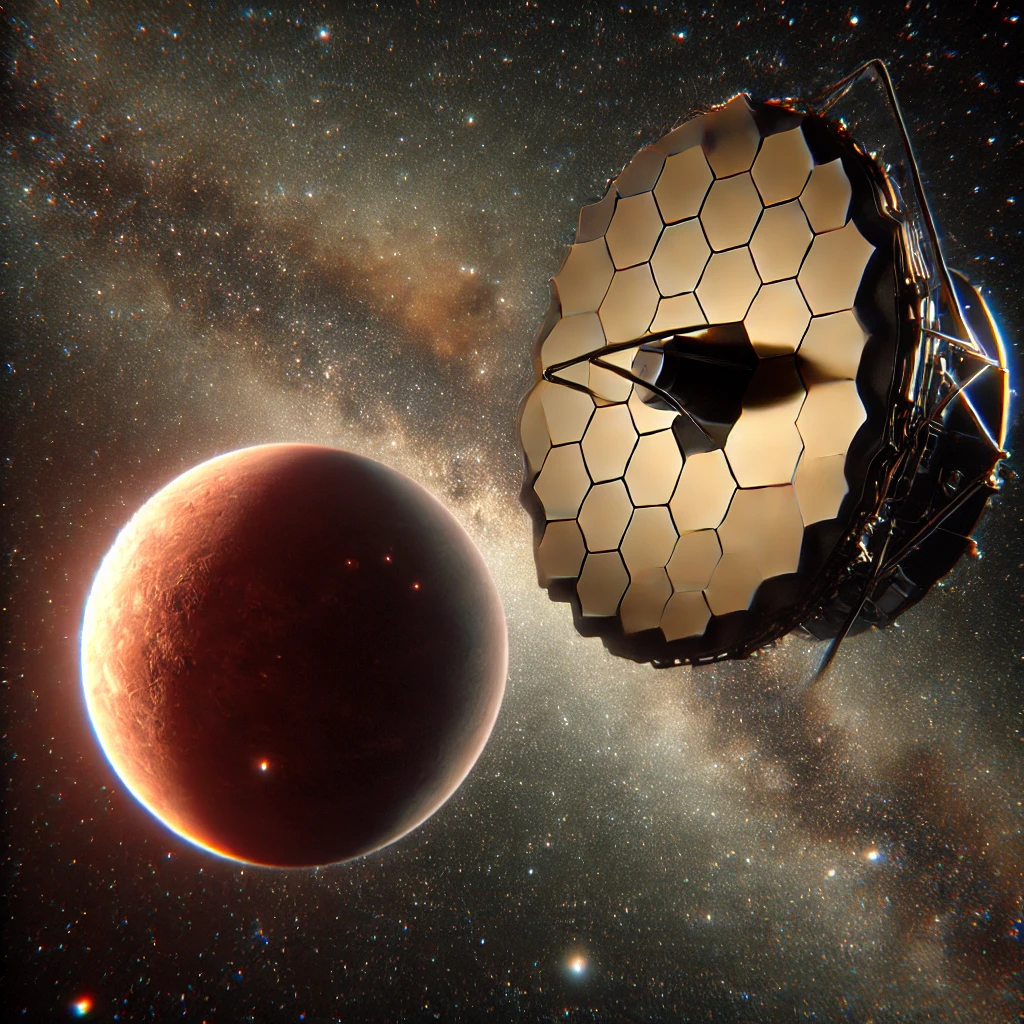Bare Rocks are Not Supposed to do That

The James Webb Space Telescope (JWST) has been observing the TRAPPIST-1 system, a collection of seven Earth-sized exoplanets orbiting a cool red dwarf star approximately 40 light-years from Earth. These observations aim to analyze the atmospheres of these planets to assess their potential habitability.
Recent data from JWST have provided significant insights into TRAPPIST-1b, the innermost planet in the system. Measurements indicate that TRAPPIST-1b has a dayside temperature of about 500 kelvins (roughly 450 degrees Fahrenheit) and suggests that it has no significant atmosphere. This is the first detection of any form of light emitted by an exoplanet as small and as cool as the rocky planets in our own solar system.
The whistleblower claimed that JWST would announce the discovery of biological signatures in the TRAPPIST-1 or Alpha Mensae star systems by October or November 2024. Interestingly, the latest observation program indicates that JWST is currently focused on TRAPPIST-1, specifically under a research initiative titled ‘Bare rocks are not supposed to do that,’ targeting exoplanets and their formation. As of November 24, 2024, no official announcements have confirmed the discovery of biological signatures, but this observation alignment with whistleblower claims raises questions. While JWST’s cutting-edge observations continue to advance our understanding of exoplanetary atmospheres, the possibility remains that the whistleblower’s claim could prove accurate, though detecting definitive signs of life is an incredibly complex and ongoing scientific challenge.
“Project Coral Lane” has emerged as a topic in discussions about extraterrestrial phenomena and disclosure narratives, presenting intriguing connections to JWST’s ongoing observations. According to information provided on the project, it highlights claims of a coordinated effort to search for biosignatures and aligns with broader extraterrestrial disclosure initiatives. The details surrounding Project Coral Lane suggest it could play a significant role in unveiling groundbreaking discoveries.
It is undeniably fascinating—and perhaps even bizarre—that the James Webb Space Telescope’s latest observations are tied to TRAPPIST-1 under the research program titled “Bare rocks are not supposed to do that.” This title alone evokes curiosity, as it suggests an anomaly or phenomenon that defies conventional expectations about planetary formation or surface characteristics. The timing and target of this observation closely align with claims made by the whistleblower, who suggested that JWST would soon uncover biological signatures in TRAPPIST-1 or Alpha Mensae, with a timeline set for October or November 2024.
Given that JWST’s focus on TRAPPIST-1 is happening right on schedule with the whistleblower’s timeline, and with the peculiarities hinted at by the program title, it raises questions about whether these events are part of a premeditated sequence designed to gradually reveal groundbreaking findings. The convergence of these details makes the situation all the more compelling and lends credibility to the possibility that we are on the cusp of an extraordinary scientific and societal revelation.
The research program titled “Bare rocks are not supposed to do that” appears to be directly related to these findings. The program aims to investigate the unexpected thermal emissions and atmospheric characteristics of these rocky exoplanets, which challenge existing models of planetary formation and atmospheric retention. By focusing on TRAPPIST-1, JWST seeks to understand the processes that lead to such anomalies in rocky planets, providing insights into their formation, evolution, and potential habitability.
The whistleblower, Charles McNeal, is described by Richard Doty, a former U.S. Air Force OSI officer, as an individual connected to “Operation Society Hike,” a counterintelligence initiative aimed at recruiting and vetting candidates for covert missions. McNeal, who engaged with the program from 2003 to 2012, gained access to sensitive information through a senior OSI mentor. Although he was not formally recruited due to legal issues, McNeal has shared information related to classified projects like Project Serpo and Majestic 12, sparking concerns about how he accessed such materials despite his unofficial status.
Charles McNeal has previously provided detailed insights into the classification and nature of alien races allegedly interacting with humanity. He clarified several aspects about these beings, including distinctions between entities like EBE-1, a male Extraterrestrial Biological Entity linked to the 1947 Roswell incident, and Nordic clones, which he claims were created by ETE-1. McNeal emphasized that Nordic clones are entirely separate from the “Tall Whites,” another purported extraterrestrial race. Additionally, he shed light on ETE-2, explaining that their home planet became uninhabitable due to volcanic activity rather than warfare, challenging some existing narratives about extraterrestrial history. McNeal’s revelations add layers of complexity to the discourse on alien species and their roles in alleged human interactions, reinforcing his standing in the broader conversation about UFOs and government secrecy.


